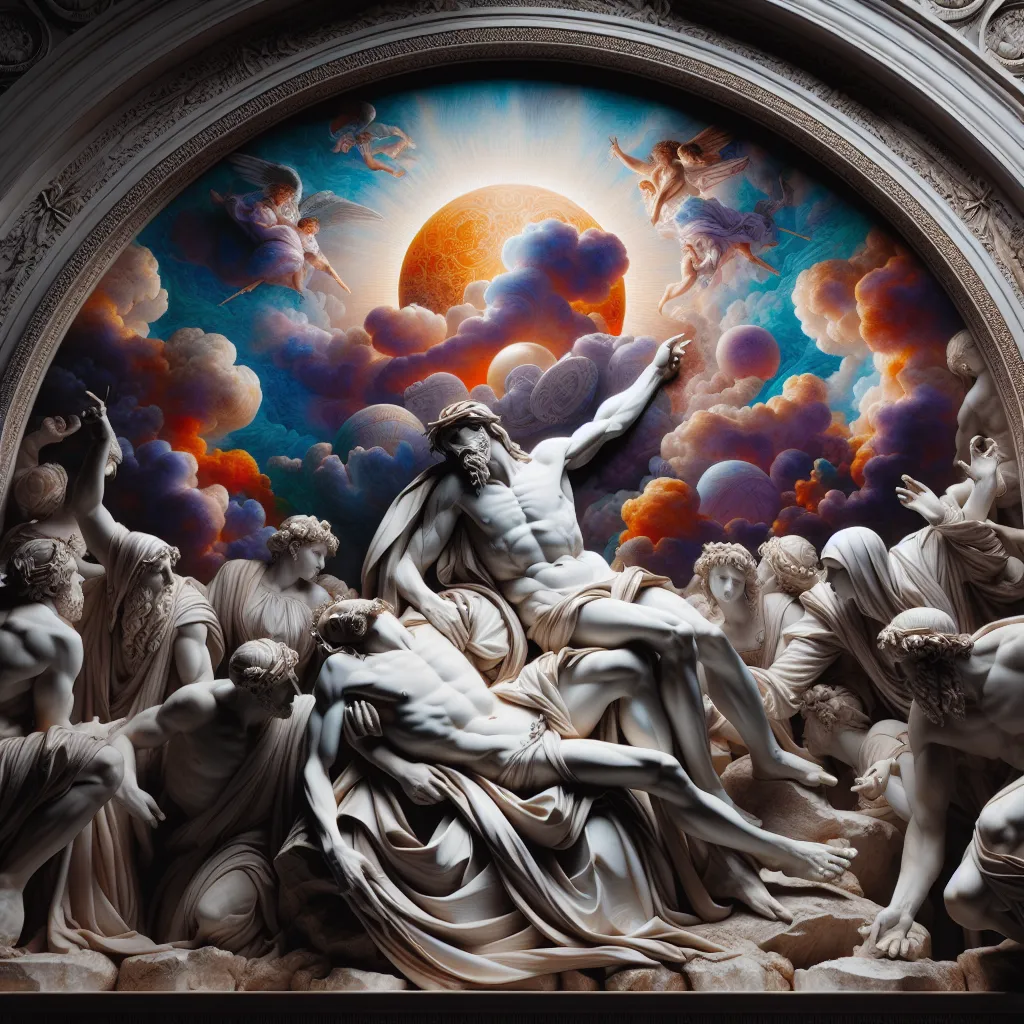
- Published on
- Authors

- Name
- You
The Crucifixion and Resurrection: Symbols of Alchemical and Spiritual Rebirth
In the canon of Christian tradition, the crucifixion and subsequent resurrection of Jesus Christ stand as the pivotal events that form the foundation of the faith. Beyond their historical and theological significance, these events have been richly interpreted by mystics, alchemists, and esoteric scholars as profound symbols of death and rebirth. This article delves into these interpretations, exploring how they bridge advanced scientific principles with ancient mystical wisdom.
Alchemical Symbolism
Alchemists throughout history have often seen the process of crucifixion and resurrection as a vivid metaphor for the Great Work or Magnum Opus. This transformative journey is divided into four primary stages:
Nigredo (Blackening): This initial stage corresponds to the crucifixion itself, representing a form of death or profound disintegration. In alchemical terms, it symbolizes the dissolution of old forms and the breaking down of material limitations.
Albedo (Whitening): Following the blackening, the alchemist experiences purification or illumination, akin to Christ’s interment in the tomb. This stage is closely associated with introspection and the purification of the soul.
Citrinitas (Yellowing): Often linked with the dawning of spiritual wisdom, this stage marks the beginning of spiritual resurrection. It implies the rebirth of the inner self, moving towards the realization of one's true divine nature.
Rubedo (Reddening): The final stage, representing the full resurrection and the attainment of spiritual enlightenment. It is the alchemical equivalent of the philosopher’s stone, signifying the ultimate synthesis of matter and spirit.
| Alchemical Stage | Symbolic Event | Spiritual Implication |
|---|---|---|
| Nigredo | Crucifixion | Death and disintegration of false ego |
| Albedo | Burial/Interment | Purification and inner reflection |
| Citrinitas | Dawn of Resurrection | Awakening of spiritual insights |
| Rubedo | Resurrected Christ | Completion of enlightenment and divine union |
Scientific Parallels
Modern science, particularly in fields such as quantum physics and molecular biology, offers intriguing parallels to these mystical processes. For example:
Quantum Death and Rebirth: In quantum mechanics, particles exist in a state of superposition until an observation collapses them into a definite state. Similarly, the notion of death and rebirth can be thought of as the universe collapsing old probabilities and manifesting new realities.
Cellular Regeneration: At a biological level, the concept of apoptosis (programmed cell death) and subsequent regeneration closely mirrors the alchemical death and rebirth cycle. Old cells are systematically dismantled, paving the way for new, healthy growth.
Mystical Interpretations
Esoteric traditions view the crucifixion and resurrection as symbolic narratives that guide the soul through its journey of enlightenment. The crucifixion represents the necessary suffering and trials one must endure to achieve spiritual maturity. Resurrection, on the other hand, is the transcendence over worldly attachments, culminating in the soul’s unification with the divine.
Key Mystical Insights:
Sacrificium Intellectus: The crucifixion symbolizes the sacrifice of lower intellect and ego (Sacrificium Intellectus) to achieve higher spiritual wisdom. This concept is crucial in the mystic's path where one must surrender personal will to align with divine will.
Anastasis: This term, meaning ‘resurrection,’ symbolizes the renewal of the self and the awakening to one’s divine essence, akin to the enlightenment sought by mystics across various traditions.
Conclusion
The crucifixion and resurrection of Jesus embody a universal theme of transformation and renewal. When we interpret these events through the lenses of alchemy and mysticism, we uncover deep, symbolic teachings that inspire both personal and spiritual growth. As advanced science continues to explore the nature of existence, it increasingly echoes the profound wisdom encapsulated in these ancient narratives, reminding us of the infinite possibilities for rebirth and enlightenment.
By embracing these symbols, we gain insights into the cyclical nature of the universe—the perpetual dance of death and rebirth that propels us toward ever greater understandings of the mysteries of life and existence.
